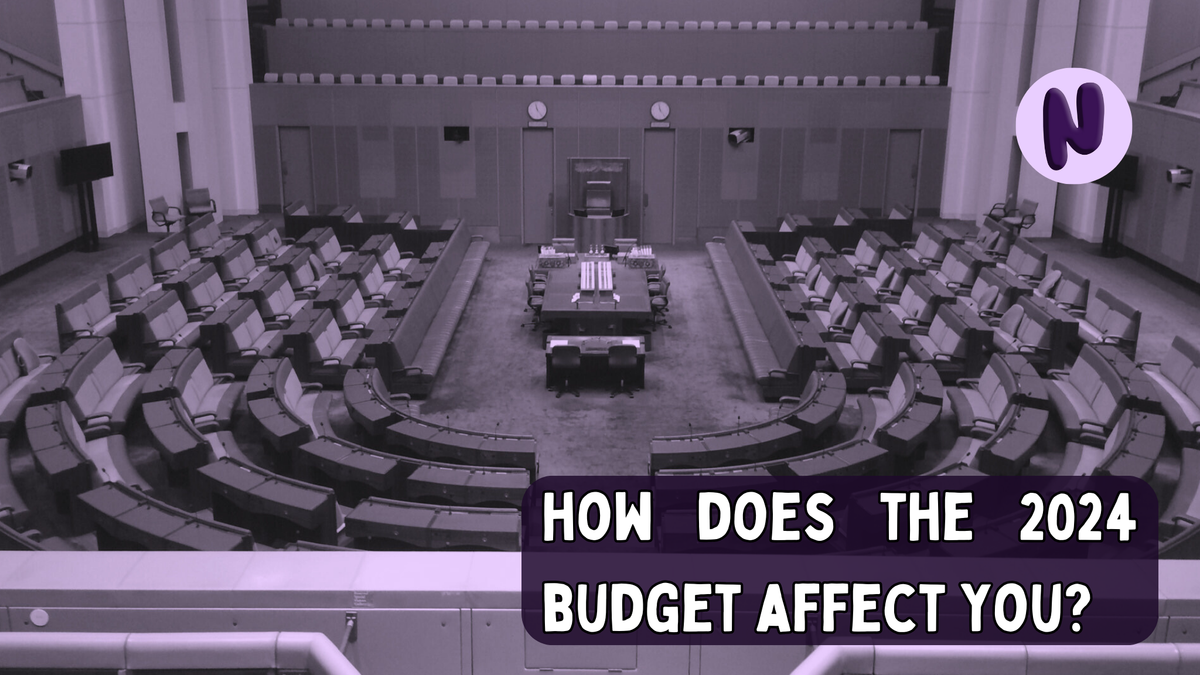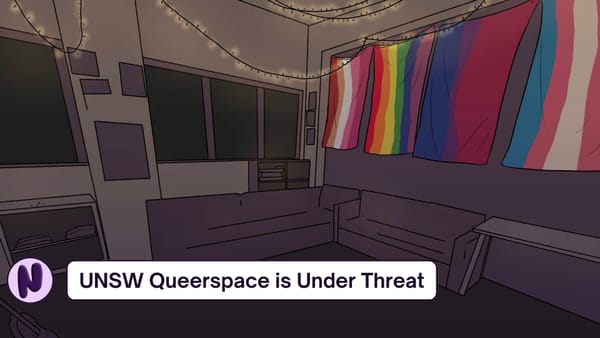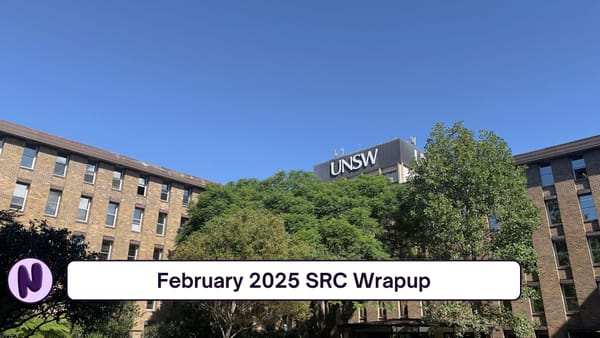How does the 2024 budget affect you?
The 2024 federal budget was announced on Tuesday evening. How does it affect you and other university students?

With the announcement of the budget speech on Tuesday evening, there was discourse amongst the student population following several big announcements made surrounding higher education. This was a significant budget for tertiary students, covering areas such as increasing welfare and financial support for students, increasing the quality of education, and improving the safety and experience of students in higher education.
Most of the items surrounding higher education in this budget were in response to the Australian Universities Accord Report, which was subsequently implemented under the Australian Universities Accord - Tertiary Education System Reforms. This report was set up by the government in order to drive long-term reform in the higher education sector, including 47 recommendations covering areas from meeting Australia’s future skills needs, providing better equity for students, and providing a better funding model for universities.
The main, and most impactful measures have been outlined below.
Changes to HECS-HELP Loans
The major takeaway from the budget was the previously announced change to indexation on student loans, such as HECS-HELP, VETFEE, and SA-HELP.
Under the old system, the interest on these loans was tied to national inflation indexes, making them susceptible to external economic factors. 2023 saw an annual increase of 7.1%, the highest in over a decade, as students continue to struggle with the cost-of-living crisis. The new system ties indexation to the lower of either the Consumer Price Index or National Wage Growth. This change is being backdated to 2023, effectively resulting in $3 billion in student debt being wiped, a saving of $1200 for the average loan.
For more detail on the measures, including a calculator on how much you will save under the new scheme, please read our dedicated article on the announcement here:
Increase in Alternative Pathway Entry
To boost the number of people attending university, $350 million will be provided over 4 years to expand enabling courses and preparation programs at university. These FEE-FREE courses provide an alternative pathway into university for students who would not otherwise qualify for entry, many being from disadvantaged areas. Under these measures, the number of students accessing these courses is expected to increase by around 40% by 2030.
Broadening access to university
Furthermore, a system will be implemented whereby more people from underrepresented student groups have the opportunity to attend university, such as people from rural and regional areas, First Nations peoples, and those from a low socioeconomic background. This system however has yet to be designed, and as such there is currently no indication as to what form this would take, or how much funding it would receive.
Addressing gender-based violence and racism
$18.7 million will be spent over 4 years to introduce a National Higher Education Code to Prevent and Respond to Gender-based Violence, which will set requirements on education and accommodation providers to prevent and appropriately respond to gender-based violence at universities. A draft action plan was released last year, with subsequent consultation from various interest groups taking place over the summer.
Additionally, the government will undertake an inquiry to examine the prevalence and effect of Antisemitism, Islamophobia, and racism in higher education.
Introducing National Student Ombudsman
$19.4 million will be spent over 2 years to establish a National Student Ombudsman, which will allow students to escalate complaints against higher education providers. Should students be unsatisfied with the response from the provider surrounding a complaint, this will provide mechanisms for students to have complaints heard by a single, national body.
New payment for students on placements
In order to encourage more people to study and subsequently get employed in critical sectors, a new Commonwealth Prac Payment of $319.50 per week will be introduced to support students in these key areas while they undertake mandatory placement. This payment will be eligible for higher education students studying nursing (including midwifery), teaching, and social work studies, and VET students studying nursing. These measures will support roughly 73,000 students per year.
Mandating increase in student accommodation
There has been mention of providing more funding for student accommodation, however, the extent of these measures is fairly minimal.
Only $2.1 million will be provided over 4 years to develop and implement regulations incentivising universities to create more ‘purpose built student accommodation’. This will be done by capping the number of international students each university can enrol based on a formula with several factors including the amount of accommodation they are able to provide. The theory is that international students are major sources of revenue for universities paying higher tuition fees, and universities will work to create more student accommodation in order to increase the number of international students they can enrol. The detail, and thus expected effectiveness of these measures are yet to be outlined.
There is also no mention of whether the regulations will include steps towards ensuring accommodation is affordable. This is a critical, but neglected area of focus during the ongoing cost of living crisis.
Mandating SSAF Funding
The government will mandate that 40% of all Student Services and Amenities Fees (SSAF) will be given to “student-led organisations”. SSAF fees provide services and amenities external to academic study, such as recreation and sport, health services, and employment assistance. Some is also spent on other student bodies such as associations, unions, and guilds, some of which provide the aforementioned services.
How this measure transpires will be interesting depending on the definition of “student-led organisations”, given the prevalence of student clubs and societies being administered by separately run not-for-profit entities such as Arc@UNSW and U@MQ.
A comprehensive breakdown on current SSAF spending is hard to quantify (that’s a story for another time), but the current percentage going towards student organisations varies wildly depending on the university.
The most recently available figures from 2022 list Arc@UNSW (“student-led” for this purpose even if this status is debatable) as having received 36.85% of SSAF Funding.
USyd sits comfortably with at least 50% going to completely student-led organisations, whereas WSU struggles to get over 25% even with the most flexible interpretations of the term.



